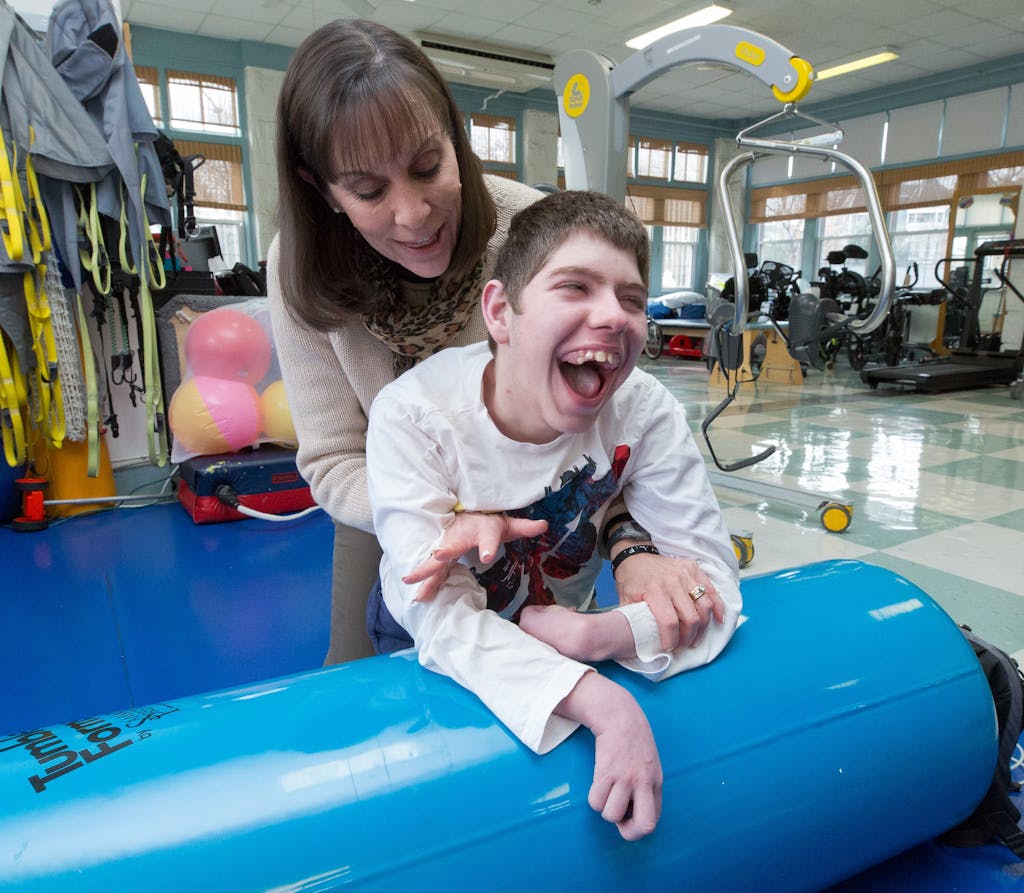Physical Therapy


Shannon drives her power wheelchair to every classroom, selling snacks for a student-government fundraiser. Mary Grace is positioned in a walker that exercises her legs and works on upright balance. Eddie gains strength for mat mobility as he practices rolling with help from his therapist. With a proud grin, Nicolas rides an adapted bike down the hall.
Through physical therapy, students participate in a comprehensive treatment program to maximize flexibility, strength, coordination and range of motion, to achieve the greatest possible functional mobility and to ambulate/use a manual or power wheelchair. PT assists with procuring the appropriate equipment to promote greater opportunities for mobility and enhanced participation in school and in the community.
PT activities promote gross motor skills at all levels with the goals of improved mobility, positioning and comfort. Therapists address seating for maximal comfort and function. Therapists also evaluate students’ orthopedic status and their need for orthotics and other assistive devices. Each child’s therapist works closely with other team members to maximize skill-building.
Power Mobility
Being able to move oneself through space is so compelling that HMS considers every child a candidate for power mobility unless experience proves otherwise. Renowned for our success in power mobility, HMS’s proactive philosophy drives our work with each student, from initial evaluation at enrollment to regular reassessments as the child develops.
Therapists can readily try students with power mobility because HMS maintains a large inventory of equipment that has either been purchased by the school or donated, including power wheelchairs and a variety of specialized seating. PT and OT staff often collaborate to fine-tune seating and to teach switch or joystick use for direction, speed and control.
HMS’s environment promotes success. The entire staff reinforces the student’s skills throughout the learning process and exhibits patience as the driver-in-training makes his way to class and other activities. For students who may not become independent drivers, power mobility can still provide an exciting motivation for other learning, and HMS takes full advantage of its attraction.
Power Wheelchairs
Power wheelchairs that we typically use during student training sessions include both pediatric and adult sizes. We use mid-wheel drive, rear-wheel drive, and even front-wheel drive power chairs. We also use a variety of different driver controls including joysticks, head arrays, single switch scanners and various types of switches to help the student gain the maximum control over the chair.
During training sessions the therapist observes where the child has the most voluntary control that can be used to activate a switch—elbows, shoulders, feet, knees, head and hands. We will work diligently on identifying the most optimal switch site for each student.
The joystick as an operating control can be mounted on the right or left arm rest or midline for easier access, or even at a student’s foot or behind the head. When a joystick is not possible, we use either mechanical or electronic switches—like head arrays—for wheelchair operation and directional control. Electronic proximity switches require no pressure to activate and allow students to drive in a relaxed manner, reducing excessive extension tone. We now use single-switch scanners with a few students who have only one consistent switch site, but have the desire to drive a power wheelchair.
